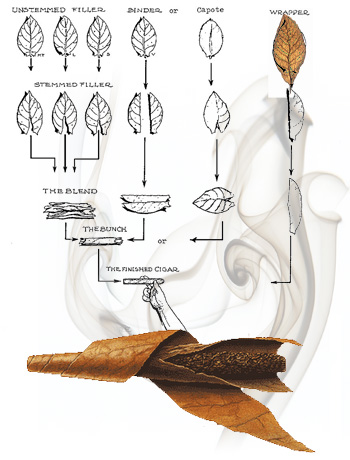Drawing

Drawing Basics
A smoker can apply several different drawing or puffing rhythms when enjoying a Habano. Some aficionados, however, recommend applying one quick draw followed by one longer draw roughly every minute. In this fashion, the short draw feeds the flame while the longer draw fills the smoker's mouth with a full-flavored taste.
Use caution, though. Drawing at too rapid a rate will cause the cigar's temperature to rise quickly, which could cause it to release more of its tars and alter its fine flavors. If you draw on the cigar too slowly, on the other hand, the cigar's construction, including its thick diameter, will keep it from burning evenly. In this case, your cigar can extinguish quickly.
Keep in mind that smoking Cuban cigars is likely to ease the act of drawing. Why? Because the rigorous quality control that is a hallmark of the Cuban tobacco industry also applies to the science of drawing. When crafting the island's unequaled cigars, factory supervisors monitor a cigar's drawing capabilities.
The science of drawing today in Cuba begins by selecting the most experienced torcedores, or rollers, who meticulously arrange a cigar's filler leaves, allowing for the free flow of air. The control process concludes when supervisors place nearly finished cigars in machines that measure the resistance of air being drawn through it. This determines if a cigar is plugged or not. Any cigars deemed too difficult to draw from are removed.
Aficionados smoking hand-rolled cigars will probably have fewer problems when drawing compared to smokers of machine-rolled cigars. This does not necessarily reflect negatively on the machines themselves but on the fact that machine-rolled cigars rely on scraps of filler leaves instead of the longer, intact filler leaves used in handcrafted cigar

